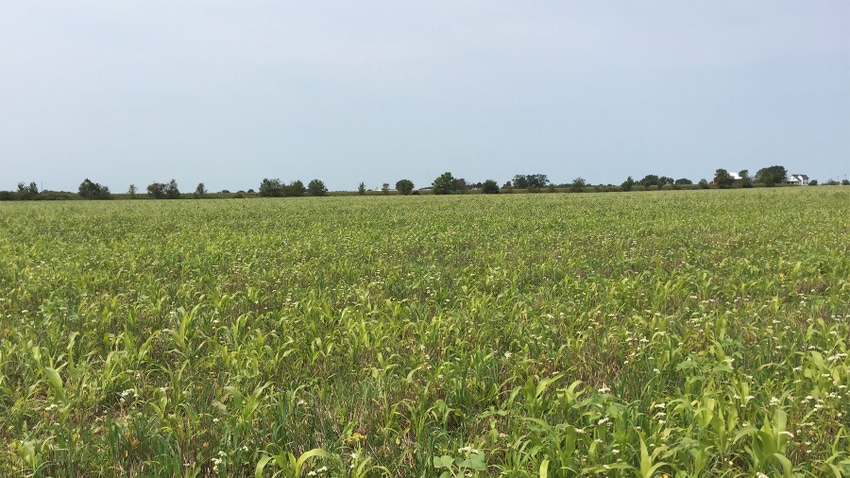September 21, 2023

by Clint Harrison
Cover crops can provide the option to extend the grazing season in the fall and start grazing earlier in the spring. Grazing cover crops can cut down on the need for hay, too.
Grazing forages is also a good way to recycle nutrients. Most nutrients will be returned to the land as manure. Manure also provides biological life to the soil, which commercial fertilizers are unable to deliver. Plus, you get the added benefit that livestock spread manure themselves instead of you doing so with a tractor.
A great high-quality forage for fall grazing is a mix of brassicas, oats and cereal rye. This combination provides both fall and spring grazing potential. With enough moisture, the brassicas and oats grow quickly in September and can produce quite a bit of forage in a very short period.
Oats and brassicas normally winter-kill, leaving cereal rye to grow through the winter. It will come on strong in the spring, providing good cover and possibly a second opportunity to graze, if conditions are favorable.
Most cereal grains, such as wheat, triticale and cereal rye, planted in the fall do not get enough growth to graze in the fall unless planted prior to Oct. 1. They can provide a fair amount of grazing next spring if soil conditions allow it. Depending on where you are located, monitor soil conditions, and be sure soils are not too wet to support animals.
Grazing on wet soils could lead to soil compaction. If you wouldn’t be out there with a piece of equipment, you don’t want animals out grazing, either. These wet soil conditions are generally not a problem in the fall.
Value of planning
Annuals planted into corn residue, especially ones with a lot of moisture like turnips or other brassicas, can increase intake of corn residue, with the combination providing better gains than either forage can do independently.
It is always best to plan out annuals and crop residues in one- to seven-day allocations for the highest efficiency. Livestock should not be left on fields all winter, or fed hay or other products that would negatively affect the cover crop and soil conditions or require tillage to resolve prior to planting. That’s another reason for avoiding grazing when it’s too wet.
When grazing cover crops grown on cropland, know what herbicides and other pesticides have been used on the field and what the wait period is prior to grazing. Always follow label restrictions.
A properly planned cover crop can add numerous options if currently grazing, or if you plan to add livestock for additional soil health benefits. Cover crops can benefit many different livestock species.
However, as with all cover crop programs, proper planning is crucial. This includes considering factors such as potential carryover of previous herbicides, cover crop seed selection, establishment methods and timing. Managing these factors successfully will help improve your overall cover crop experience. Explore how you can integrate cover crop grazing opportunities into your pasture-based livestock operation.
For more information about bringing cover crops into your grazing system, contact your local USDA Service Center.
Harrison is a district conservationist with the Natural Resources Conservation Service. He writes on behalf of the Indiana Conservation Partnership.
Read more about:
GrazingYou May Also Like




